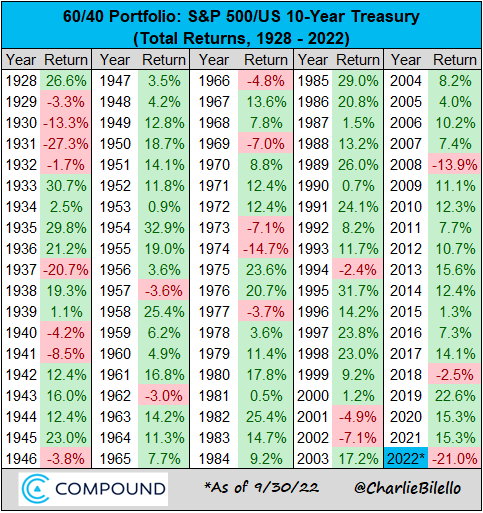Buy Sell Why: ad infinitum. Couple things to ponder re "stocks for the long run"...
article in Marketwatch, Statman, June 2017...
Nobel Prize-winning economist Paul Samuelson argued that the advocacy of time-diversification is built on framing errors that mislead investors into an illusory happy ending, as if the probability of losses over the long run is zero.
To understand the nature of these framing errors, consider an investor who invests $1,000 in a portfolio with a 50–50 chance to gain 20% or lose 10% each year, as laid out in Figure 1. The investor has a 50% probability of losing money if her horizon is one year, but she has only a 25% probability of losing money if it is two years.
If risk is framed as the probability of losing money, risk declines as the horizon increases, but if risk is framed as the amount of money that can be lost, risk increases as the horizon increases. The investor might lose $100 after one year, but she might lose more, $190, after two years.
from Wishful Thinking About the Risk of Stocks in the Long Run: Bodie, March 2020
By looking at the average rate of return rather than the amount of wealth at the end of the holding period, the impression is created that risk declines with the length of one’s time horizon. The standard deviation of the average rate of return declines with the length of the time horizon because it is an average.
The problem is that, although the principle of diversification works across securities and
asset classes, it does not work over time. Even a highly diversified portfolio of stocks does not become safe in the long run. Yet here is the kind of thing customers are told on a typical website: Invest in stocks, either individually or in mutual funds, for long-term growth. While in any given year stocks can be more volatile than other investments, over time, they have typically outperformed all other types of investments while staying ahead of inflation. Stocks should be the core of a long-term investing strategy. If stocks are so great for the long run, then why don’t the same firms offering this advice offer a performance guarantee to pay at least what a customer contributes to a diversified equity portfolio adjusted for inflation? After all, the firm managing the fund is in a much better position to evaluate and manage the risk than the customer is. If the firm believes what it is saying, it ought to offer a free guarantee for its product. That’s what other industries do. Of course, option-pricing theory shows that such a guarantee is far from free.
My thoughts/questions/concerns"
If stocks are "safer" in the long run why Puts cost more, the longer the strike date is?
We as humans are not generally wired to hold thru large downdrafts...I saw many corporate types happlily retire in 06' then come crawling back begging for their old jobs in 09'...they weren't real happy, nor real motivated to say the least...
Why sit thru the downdraft? Who cares if you leave some schekels on the table getting back in
Even if I was 25 years old, I would max hold 65% stocks..first downdraft, you will sell, saw it over and over in 07', 08' with younger colleagues at work
Markets since early 70s, have seen relatively political stability, rule of law, etc...things are looking kind of squirrely now at best...who knows what will happen
BIVIX @Lewis -- I would argue that ARKK also engages in a form of value investing if you broaden the definition of value as paying for something today that you expect to sell for higher tomorrow. ARKK is obviously using growth and discount rate assumptions different than what "classic" value investors do but it's all value investing the way I see it
@Balu,
@Dennis -- I bought at Schwab through a grandfathered eligibility situation which might not be available to everybody. I've been watching this fund since February when I just missed buying into it before it publicly closed. Strategy is quant + fundamental as described at
https://www.invenomic.com/_files/ugd/8592d8_c3a2c82a2bdd4701b77dcfdf2100a230.pdf Currently net 25% long positioning which I'm good with. Invenomic provides monthly commentary which is not common. Standpoint's Eric Crittenden provides monthly commentary too
Per portfolio visualizer inception to date performance is over 22% vs. SPY which is over 9%. 3Y performance numbers starting 10/01/2019 are 34% and 8% respectively. Any performance numbers below 3
years I don't pay much attention too but BIVIX has been on fire in 2022 YTD 30% vs. -23% for SPY

